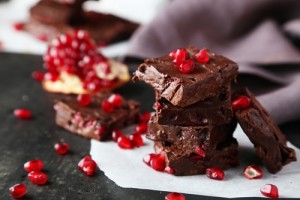Chocolate Delight: The Guide To Making Creamy Fudge

In his book “Oh Fudge! A Celebration of America’s Favorite Candy,” author Lee Edwards writes that the U.S. has been obsessed with this chocolaty treat since it was first introduced in the late 1880s. Since that time, fudge has become a huge part of the candy industry, and is sold everywhere from annual state fairs to corner shops across the country. Yet, like so many other sweets, it’s often best to make fudge yourself, utilizing your experience in culinary academy to craft the sweetest blend possible. Here are a few handy pointers for your adventure in fudge:
Cooking the right way
It’s worth noting that while almost every chef seems to have a fudge recipe, it’s not always the easiest treat to prepare. If you don’t cook fudge for long enough, not every ingredient will blend effectively and you’ll be left with syrup-like chocolate paste. However, overcooking can lead to the formation of too many sugar crystals, and that results in hard, brittle fudge. According to Ricardo Cuisine, the perfect cooking temperature is 114 degrees Fahrenheit, which allows just enough water to evaporate to leave the fudge rich and smooth.
When to stir?
In order to get the smoothest batter possible, you need to ensure your fudge contains just enough sugar crystals. These constructs usually form during the cooling process, which is why it’s important to stir your fudge after its had a chance to cool. ideally, the fudge should reach about 43 degrees Fahrenheit, which is when you should have plenty of decent sized sugar crystals. In fact, stirring will actually help to strengthen the structure of these crystals, Ricardo Cuisine noted. If you stir before the fudge has had a chance to cool down enough, the sugar crystals will grow far too large, and the result is grainy, sub-par fudge.
Better fudge through butter
When it comes to fudge, butter can often be your best friend. To begin, always line the foil in your pan with butter, as this will making cutting and removing the final product easier. Additionally, some chefs will replace butter for margarine in their fudge recipes. Margarine is a slightly healthier option, but it can cause the actual fudge to set improperly. When using butter, though, it’s a good idea to warm it up beforehand, as this makes it generally easier to work with and blend with the other ingredients.
Get the right thermometer
Candy might be sweet, but it’s sometimes tricky to make. More often than not, those issues can be traced to the sensitive temperature ranges involved with most candy recipes, including fudge. That’s why you should rely on an especially sensitive thermometer, and one specially made for these sweet treats. The candy thermometer is super accurate, but just be sure that it touches the boiling fudge and not just the accompanying top layer of foam. Before you use your candy thermometer, though, it’s a good idea to test it out with a pot of boiling water.






Recent Comments